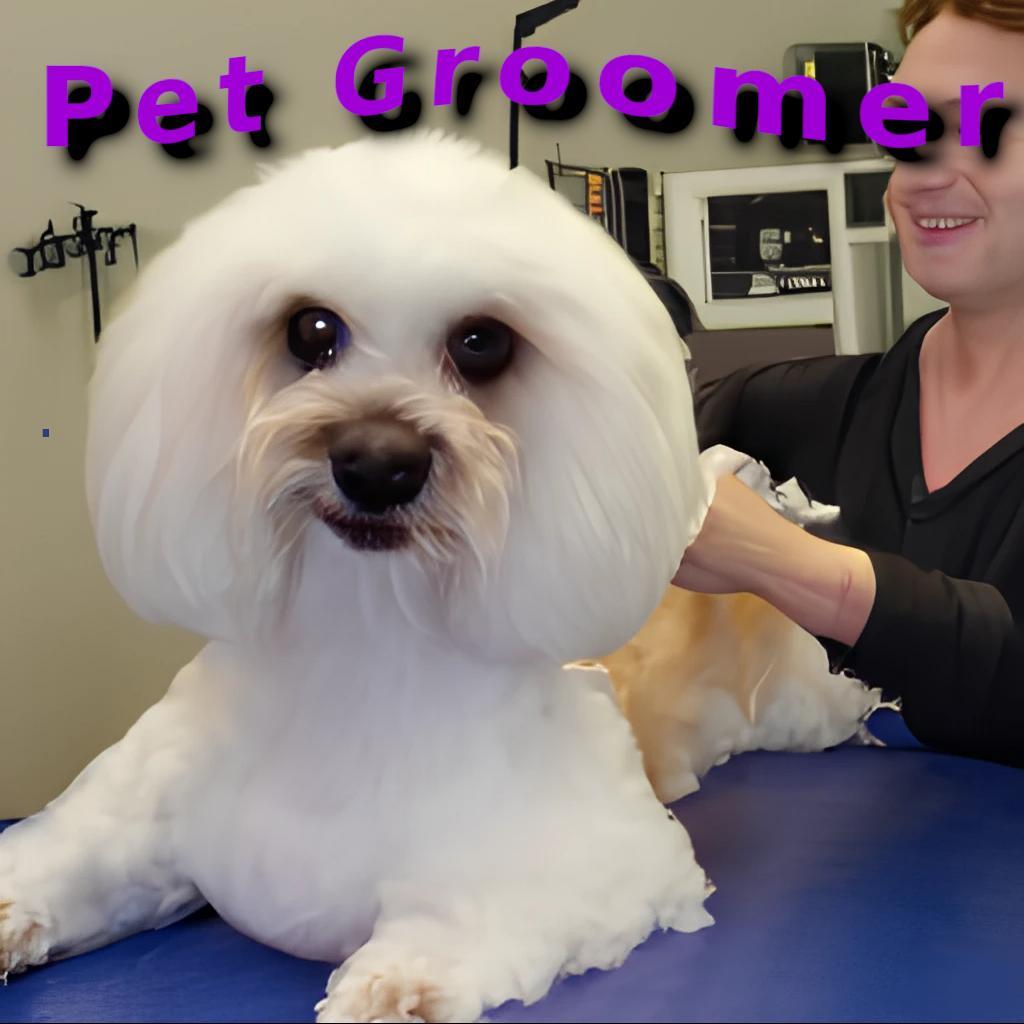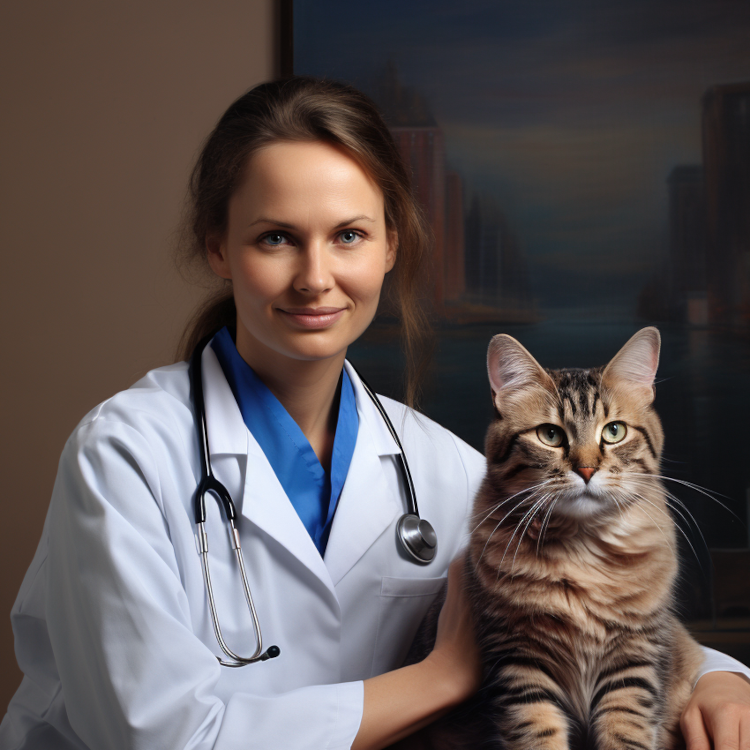


Pet grooming is more than just a luxurious treat for your furry companions; it is an essential aspect of their overall health and well-being. Regular grooming not only keeps your pets looking and smelling fresh but also contributes to their comfort and happiness. In this comprehensive guide, we'll explore the importance of pet grooming, discuss essential grooming practices, and provide practical tips for pet owners to make the grooming experience enjoyable for both pets and their human caregivers.
The Importance of Pet Grooming.
Coat Maintenance and Skin Health:
Regular grooming helps maintain a healthy coat and skin for your pets. Brushing removes loose fur, prevents matting, and stimulates blood circulation, promoting a shiny and well-nourished coat. Additionally, it allows you to identify any skin issues or abnormalities early on.
Preventing Parasites and Infections:
Grooming sessions are an opportunity to inspect your pet for signs of parasites such as fleas and ticks. Regular baths and grooming help prevent infestations and reduce the risk of skin infections, ensuring your pet's comfort and well-being.
Dental Health and Hygiene:
Pet grooming includes dental care, an often overlooked but crucial aspect of overall health. Brushing your pet's teeth regularly helps prevent dental issues, gum disease, and bad breath. Proper oral hygiene contributes to a healthier and happier pet.
Essential Pet Grooming Practices.
Brushing and Detangling:
Different pets have varying coat types, and each requires specific grooming practices. Regular brushing helps remove loose fur, prevents matting, and distributes natural oils throughout the coat. For longer-haired breeds, additional detangling may be necessary.
Bathing and Shampooing:
Bathing is a vital part of pet grooming, helping keep your pet clean and smelling fresh. Use pet-safe shampoos and follow recommended bathing frequencies based on your pet's breed and lifestyle. Be cautious not to over-bathe, as it can strip natural oils from the skin.
Nail Trimming and Paw Care:
Regular nail trimming is essential to prevent overgrowth and discomfort for your pet. Additionally, check your pet's paw pads for cuts, abrasions, or foreign objects. Paw care contributes to your pet's overall comfort and prevents potential infections.
Tips for Successful Pet Grooming at Home.
Introduce Grooming Gradually:
If your pet is not accustomed to grooming, introduce the process gradually. Start with short sessions, offering treats and positive reinforcement to create a positive association with grooming. Gradually increase the duration as your pet becomes more comfortable.
Use the Right Tools:
Invest in high-quality grooming tools suited to your pet's coat type. Brushes, combs, and nail clippers designed for pets ensure effective grooming without causing harm. Consult with groomers or veterinarians for recommendations on the best tools for your pet.
Be Patient and Gentle:
Grooming requires patience and a gentle approach. Speak to your pet in a soothing tone, and avoid sudden movements that may startle them. If your pet becomes stressed or anxious during grooming, take breaks and provide reassurance.
Pet groomers provide a variety of services to help maintain the hygiene and appearance of pets. These services typically include:
Bathing: Pet groomers use specialized shampoos and conditioners to clean pets' coats thoroughly. They also rinse the coat thoroughly to remove any shampoo residue.
Haircutting: Pet groomers are trained in various haircutting techniques to give pets a neat and tidy appearance. They use specialized scissors and clippers to trim the coat to the desired length.
Nail trimming: Overgrown nails can be painful for pets and cause damage to floors and furniture. Pet groomers use specialized clippers to trim nails to an appropriate length.
Ear cleaning: Regular ear cleaning can help prevent infections and ear mites. Pet groomers use specialized solutions and tools to clean pets' ears gently.
Teeth brushing: Brushing pets' teeth regularly can help prevent dental problems such as plaque and gum disease. Pet groomers use specialized toothbrushes and toothpaste to clean pets' teeth gently.
Coat conditioning: Pet groomers use specialized conditioners to keep pets' coats soft and shiny. This can help prevent the matting and tangling of the coat.
Flea and tick treatment: Pet groomers can apply specialized treatments to help prevent fleas and ticks from infesting pets. These treatments are especially important during warm weather months.
There are various types of fur or coats that different pets have. Some of the most common types of pet fur include:
Short-haired: This type of fur is typically smooth and lies close to the pet's body. It requires minimal grooming and shedding is usually minimal.
Long-haired: Long-haired pets have a thick coat of fur that can be silky or coarse in texture. This type of fur requires regular grooming to prevent matting and tangling.
Curly-haired: Curly-haired pets have a coat of fur that is tightly curled or wavy. This type of fur is often found in breeds such as poodles and requires regular grooming to prevent matting.
Double-coated: This type of fur is found in many breeds, including Huskies and Samoyeds. It consists of a soft undercoat and a coarser topcoat that provides insulation. Double-coated pets require regular grooming to prevent matting and shedding.
Hairless: Some pets, such as Sphynx cats and Chinese Crested dogs, have little or no fur. These pets require special care to protect their sensitive skin from sunburn and cold weather.
Wire-haired: Wire-haired pets have dense, wiry coat that requires regular grooming to prevent matting and tangling. This type of fur is often found in breeds such as Terriers.
Feathered: This type of fur is found in birds, such as parrots, and consists of long, soft feathers that provide insulation and protection. Feathered pets require regular grooming to prevent matting and to maintain the health of their feathers.
(!) Each type of fur requires different grooming techniques and care, so it is important to research the specific needs of your pet's coat.
There are several common issues that can arise with pets' fur, and taking preventative measures can help avoid these problems. Some of the most common issues include:
Matting and tangling: This occurs when the fur becomes knotted and twisted, which can cause discomfort and even skin irritation for the pet. To avoid matting and tangling, regular grooming is essential. This includes brushing and combing your pet's fur daily, and scheduling regular grooming appointments with a professional pet groomer.
Shedding: Pets can shed their fur excessively, which can lead to fur all over your home and clothing. To avoid excessive shedding, regular grooming, and brushing can help remove loose fur before it falls out on its own. Additionally, certain diets and supplements can help promote healthy skin and fur, reducing shedding.
Dryness and flakiness: Pets' skin and fur can become dry and flaky, which can cause discomfort and itching. To avoid dryness and flakiness, it is important to provide your pet with a balanced and nutritious diet and ensure that they are getting enough hydration. Additionally, using moisturizing shampoos and conditioners during grooming can help keep the skin and fur healthy and hydrated.
Skin irritation: Pets can experience skin irritation from a variety of factors, including allergies and insect bites. To avoid skin irritation, it is important to keep your pet clean and groomed and to regularly check for signs of irritation or inflammation. If your pet is experiencing persistent skin irritation, a visit to the veterinarian may be necessary to determine the underlying cause.
Fleas and ticks: These parasites can cause discomfort and even transmit diseases to pets. To avoid fleas and ticks, it is important to regularly apply flea and tick prevention products and to keep your pet clean and groomed to help remove any potential parasites.
Regular grooming and attentive care can help avoid many common issues with pets' fur. Additionally, staying up-to-date on your pet's veterinary care can help identify and address any potential problems before they become more serious.
There are several reasons why pet grooming is important, and why you may need to find a professional pet groomer to help care for your pet's hygiene and appearance. These reasons include:
Health: Regular grooming can help keep your pet's skin and fur healthy and free of parasites, mats, and tangles. Grooming can also help detect any potential health issues, such as skin irritations, infections, or growths, that may require veterinary attention.
Comfort: Grooming can help keep your pet comfortable and free of discomfort or irritation caused by mats, tangles, or pests.
Appearance: Grooming can help your pet look its best, which can be especially important for pets that participate in shows or competitions.
Finding the right pet groomer is important to ensure that your pet receives the best possible care. Here are some tips for finding a reputable pet groomer:
Ask for recommendations: Ask friends, family, or your veterinarian for recommendations for local pet groomers.
Check credentials: Look for a pet groomer who has professional certification or who has completed a grooming program. You can also ask to see the groomer's license or certification.
Check reviews: Look for online reviews or testimonials from other pet owners who have used the groomer's services.
Visit the grooming facility: Schedule a visit to the grooming facility to see the conditions and cleanliness of the space, and to meet the groomer and staff.
Ask questions: Ask the groomer about their experience and techniques, and what kind of services they offer. Make sure they are familiar with your pet's breed and any specific grooming needs.
Trust your instincts: Choose a groomer who makes you feel comfortable and who you trust to provide the best care for your pet.
Pet grooming is a holistic practice that extends beyond aesthetics, contributing to the overall health and happiness of your furry friends. By incorporating regular grooming practices, using the right tools, and approaching grooming sessions with patience and positivity, you can create a positive grooming experience for your pets. Remember, grooming is not just a chore—it's an opportunity to strengthen the bond between you and your pet while ensuring their well-being and comfort.

We use cookies
We use cookies and other tracking technologies to improve your browsing experience on our website, to show you personalized content and targeted ads, to analyze our website traffic, and to understand where our visitors are coming from. Privacy Policy.